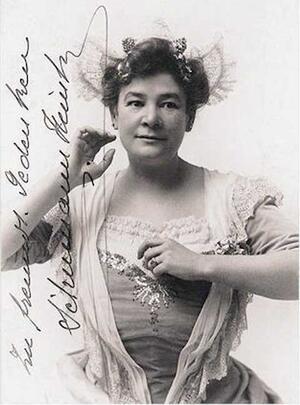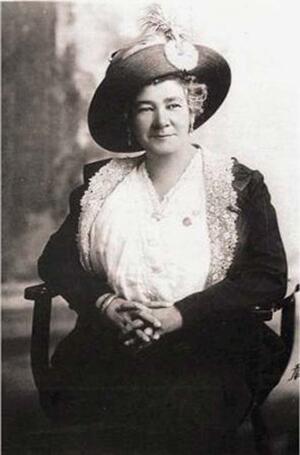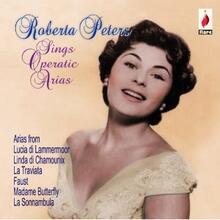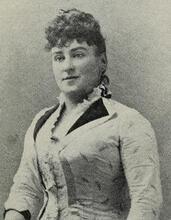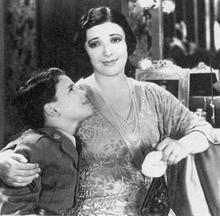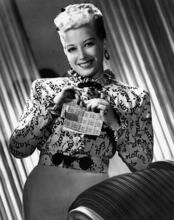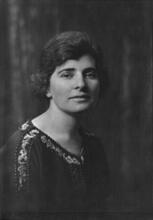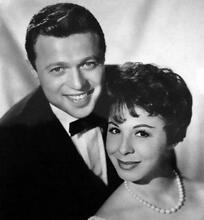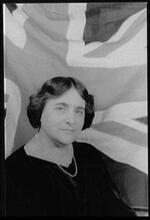Ernestine Schumann-Heink
Born in 1861 near Prague, Ernestine Schumann-Heink became an international opera sensation while raising seven children. Following her unsuccessful debut at the Dresden Opera in 1877, Schumann-Heink rose to fame at the Hamburg Opera in 1889, when she performed the titular role in Carmen without any prior rehearsal. Talented and driven, Schumann-Heink became known for her superior phrasing, diction, and understanding of lyrics. She became world-famous for singing Wagner’s works and soon after made her debut at the Metropolitan Opera. During World War I, she performed for troops across America, raising funds for the Red Cross, the YMCA, and Jewish War Relief. Following the war, she became a radio star and made numerous recordings with Columbia, RCA Victor, and His Master’s Voice.
Early Life and Family
At one point in her career hailed as “the world’s greatest contralto,” Ernestine Rössler was born on June 15, 1861, in Lieben, near Prague (now in the Czech Republic, but then part of the Austro-Hungarian Empire). According to some sources, her non-Jewish father was a lieutenant in the Austrian cavalry, but others maintain that he was a cobbler. Ernestine later alleged that she inherited her aggressiveness and stubbornness from this “real old roughneck,” while her softer qualifies and appreciation for the arts came from her Jewish mother, Charlotte (née Goldmann), an alto singer, who appears to have met and married her husband while he was serving in Italy. The couple first settled in Lieben but moved to Verona when Ernestine was three years old. At the outbreak of the Seven Weeks War between Germany and Austria in 1866, the family moved to Prague, where Ernestine attended the Ursuline convent school while also learning singing from her mother. At war’s end, the family moved to Podgrozj, near Cracow, and when Tiri, as she was called, was thirteen, to Graz. Here she met Marietta LeClair, a retired opera singer, who agreed to give her voice lessons.
In 1877 Ernestine made her professional debut in Beethoven’s Ninth Symphony and on October 15, 1878, at the age of seventeen, appeared in Dresden as the elderly gypsy Azucena in Verdi’s Il Trovatore, a role in which she was later to excel. For five years she sang minor parts at the opera, supplementing her meager income by singing in the choir at the Dresden cathedral.
In 1882 she married Ernst Heink, secretary of the Dresden Opera, by whom she had four children. Their marriage violated the terms of their contracts and they were summarily dismissed. Heink took a job at the local customs house and was soon transferred to Hamburg, while Ernestine remained in Dresden, eventually rejoining him in the autumn of 1883 when she secured a position at the Hamburg Opera. Here too she sang small roles for six years, but also found engagements at festivals and concerts.
Opera Career
The singer’s breakthrough into leading roles came in 1889 when prima donna Maria Götze argued with the director of the Hamburg Opera. He asked Ernestine to sing the title role in Carmen, without rehearsal, which she did, to great acclaim. In a fit of pique, Götze canceled out of the role of Fidès in Meyerbeer’s La Prophète, which was to be performed the following night and was again replaced by Ernestine. The following evening Ernestine again replaced Götze as Ortrud in Wagner’s Lohengrin, again without rehearsal—and was offered a ten-year contract. From then on, Ernestine was famous, performing an average twenty times a month.
In 1893 Ernestine divorced Ernst Heink and married Paul Schumann, an actor, and director at the Thalia Theater in Hamburg, with whom she had three more children. Schumann taught his wife to interpret songs by speaking the words before she sang them. Her phrasing, diction, and understanding of lyrics owed much to his insight and contributed to her career as a singer of lieder as well as opera. Schumann died in 1904.
In 1905 Schumann-Heink married William Rapp, Jr., a Chicago lawyer who had become her manager and who was thirteen years her junior. From April 1906 until December 1911, they lived on Caldwell Mountain, near Montclair, New Jersey, in her Villa Fidès. They divorced in 1914.
In the years that followed Heink-Schumann’s 1899 breakthrough, she became a well-known interpreter of Wagner, singing at Bayreuth Festivals from 1896 to 1914. Cosima Wagner called her “my dear Erda” and indeed Heink-Schumann’s rendering of the latter’s “Weiche, Wotan, weiche” became world-famous.
In 1892 she performed in Wagner’s Ring under Gustav Mahler at Covent Garden in London, singing the roles of Erda and Fricka, as well as Brangäne in Tristan und Isolde. She also sang under Bruno Walter, who recalled her as self-willed and original, unprepared to be influenced by the efforts of a young musician like himself. Realizing that he could rely on her to make serious use of her outstanding talents, he limited himself to purely musical understandings in rehearsals, without attempting to affect her interpretations.
Schumann-Heink sang in Chicago in 1897 and made her debut at the Metropolitan Opera as Ortrud on January 9, 1899, a few weeks after giving birth to her seventh child. She continued to perform regularly at the Metropolitan until 1932.
Richard Strauss invited her to perform the role of Klytemnestra at the premiere of his opera Elektra at the Dresden Court Opera on January 25, 1909. Apparently she did not have a high opinion of his work; for his part, Strauss was not entirely taken by her singing. According to one account, during rehearsals he instructed the orchestra: “Louder! I can still hear Madame Schumann-Heink!”
Strauss’s opinion was not shared by the public at large. In June 1915, when the singer performed before an audience of 27,000 at the Balboa Park Organ Pavilion in San Diego (in the vicinity of which she had purchased a large estate in 1910), the local newspaper reached for the height of hyperbole: “The greatest organ, the greatest voice, the greatest chorus, the greatest outdoors on earth, she’s glorious [sic].”
World War One
Schumann-Heink’s plans to establish a summer festival in San Diego, similar to that in Bayreuth, were interrupted when the United States declared war on Germany on April 6, 1917. As a naturalized American of Austrian origin, with a brother in command of an Austrian warship, her son August Heink in the German navy and her stepson Walter Schumann and sons Henry Heink and George Washington Schumann all in the American navy and with two sisters living in Germany, Schumann-Heink found her love for her new country clashed with that for the old. Putting aside whatever sympathy she may have felt for Germany, she devoted her energies to promoting an American victory, appearing before troops countrywide and raising funds for the Red Cross, the YMCA and Jewish War Relief. After she sang Gounod’s Ave Maria and Bizet’s Agnus Dei at a military mass in San Diego on July 19, 1917, she was decorated with the Colors of the 21st Infantry Regiment and named an honorary colonel.
Late Career and Legacy
In 1926 Schumann-Heink first sang “Silent Night” in English and German on the radio at Christmas. This became an annual tradition that continued until 1935. On March 11, 1932 she bade farewell to the stage, singing Erda at the Metropolitan Opera, but she continued to perform in weekly radio programs sponsored by a manufacturer of baby foods, which led to her being termed “The Nation’s Beloved Mother.” Though not beautiful, Schumann-Heink turned her plainness into an asset by playing the part of an ideal, self-sacrificing mother who loved her children (that is, everybody) yet scolded them when they did not come up to expectations. She once said that her lack of good looks enabled her to avoid temptations that might have proved enjoyable.
At the age of seventy-four, she appeared in a film, Here’s to Romance, with such success that she was overwhelmed with further offers to appear in films. She made numerous recordings with Columbia, RCA Victor, and His Master’s Voice.
Sick with leukemia during the greater part of 1936, she died at her home in Hollywood on November 17 at the age of seventy-five.
Lawton, Michael. Schumann-Heink, the Last of Titans. New York: 1928.
Lexikon Jüdische Frauen. Edited by Jutta Dick and Marina Sassenberg.

